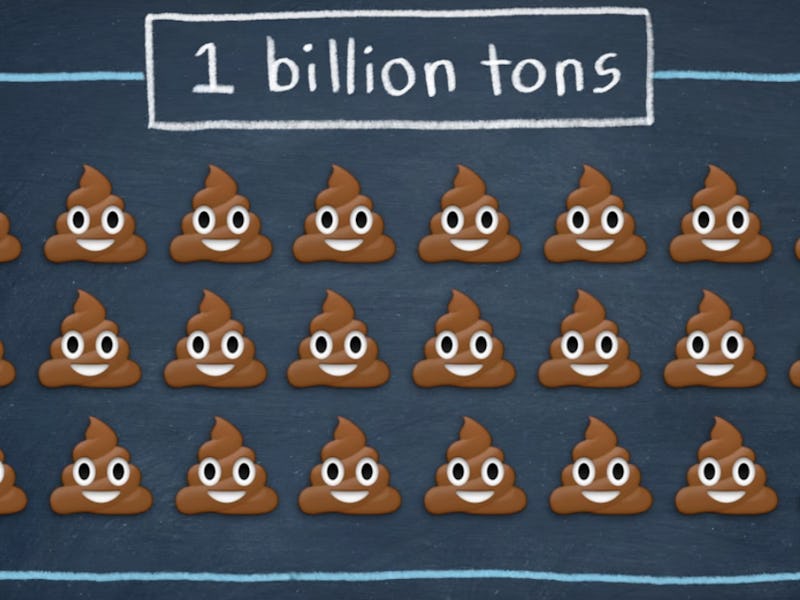UCLA Explains How We Turn Waste Into Fuel With Video Starring Smiling Poos
The idea of poop-as-biofuels has been floating around for a few years and now there's video.

A video featuring a smiling poo emoji released today by the University of California reminds us that there’s energy in human waste. The idea of poop-as-biofuels has been floating around for a few years — most notably in Britain, where the so-called Bio-Bus loads up on excrement and putters around Bristol.
If you want to turn stank sausage into readily usable liquid energy, you have to enlist some microscopic help: By altering the bacteria Bacillus subtilis, the UCLA scientists can feed waste polypeptides to the germs, which then produce biofuels and ammonia. It’s an ouroboros of excretion, consumption, and excretion. In 2014, the team reported biofuel yields of 20 percent of the theoretical max. The process, they wrote in the journal Metabolic Engineering, demonstrates “the feasibility of direct microbial conversion of polypeptides into sustainable products.”
“For about eight years, we have worked on converting waste proteins, including animal wastes, algal biomass, fermentation residues, and other agricultural wastes to usable products,” says UCLA engineer and study co-author James Liao to Inverse, who emphasized the lab is more focused on animal waste rather than human poo.
“We now have a even better organism, Bacillus mamaransis, which can grow in extreme alkaline solutions, where very few (if any) other organisms can survive.”
Unlike traditional biofuels — think corn-based ethanol — the end product isn’t corrosive to metal, argue the UCLA scientists. That means you could, in theory, just fill up your tank without any conversion, says metabolic engineer David Wernick.
Bioengineers still need to figure out how to increase the bacterial yield, tweaking the microbe strains until they excrete higher percentages of potential biofuel. The end fuel is going to have to be cheap enough, too, to compete with gasoline. “The area needs much more investment and work to improve efficiency,” says Liao. “We just pointed to the path.”
What no one has to worry about is a lack of manure — the U.S. churns that stuff out, agriculturially and anthropogenically, at a rate of 1 billion tons annually. If we can tap into this resource, a greener earth might look a little browner, too.